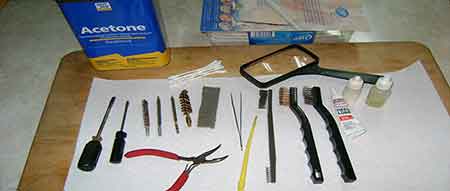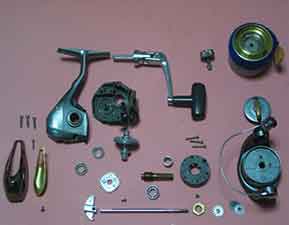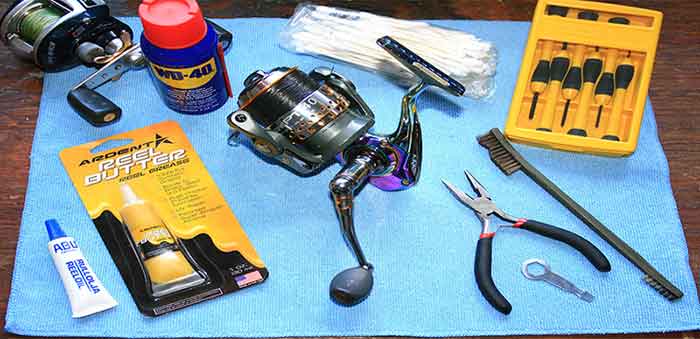How to Clean Fishing Reels – Step By Step Guide From A Fishing Expert
How often do you clean your fishing reel? Whether it is a freshwater reel or a saltwater reel, proper maintenance and cleaning will help improve its effectiveness and lifespan. Surprisingly, there are still a lot of people who don't know how to clean their fishing reels the right way.
You shouldn't blow up and blast your expensive equipment with a harsh spray from the end of your garden hose in the name of cleaning your fishing reel. If you do that, you damage the equipment, rather than cleaning it.
Proper cleaning of your fishing reel improves its effectiveness and durability. The frequency at which you clean your reel may vary with various factors that we are going to see in this guide.
Table of Contents
Assemble the Right Tools and Cleaning Supplies
You will need tools to assist you clean and maintain Globo Surf. Before you begin each cleaning session, gather all the tools and equipment you need for the job. You will need two small screwdrivers, a pair of tweezers, a toothpick, and an old toothbrush. You will also need a wrench and a parts list that came with the reel. Depending on your favorite cleaning products, choose only the best of these products.
I usually use Penn Rod and Reel Cleaner, but you can also use Simple Green cleaning compound or Ronsonol lighter fluid. Some of these products help remove the contaminated grease or oil. Alongside these products, you can use products that contain synthetic reel oil and the precision reel grease. Once you've gathered these products, you are good to go.

Always remember that your fishing reel is the most important equipment for you as an angler. The frequency in which you clean and maintain it and how effectively you do it increases its performance and lifespan. Saltwater is a fishing reel's number one enemy, followed closely by dirt or sand. This guide presents you with a simplified approach to cleaning and maintaining fishing reel that applies to both saltwater and freshwater fishing.
The only difference in cleaning reels used in these two types of water is the frequency at which you should clean and maintain them. Saltwater anglers need to clean their gear after every fishing trip, while freshwater anglers can stretch it to after a week, month, quarterly, of a couple of times a year.
After a fishing day out, there are several methods to adopt to clean your fishing reel properly. When you get home after each use in fresh or saltwater, sponge the reel lightly with warm soapy water. You do the same to the fishing line too. After every part is thoroughly cleaned, rinse off with fresh water at very low pressure.
Just don't wash the reel under high pressure or immerse it in water because this forces water into the drag and gearing systems with extremely damaging results. After you have rinsed it appropriately, wipe them dry with a clean cloth and then lightly spray the reel with a WD40-type surface spray while you try to keep it off the line (some products may react with it).
Underside of the Spool
You should also clean the underside of the spool. Undo the drag knob, then slide off the spool and clean its underside. Lightly grease the main shaft and replace the drag knob and spool.
Make sure you leave the drag knob loose to keep the pressure out of the drag washers while it isn't in use. You need a high-grade reel or sewing machine oil for lightly oiling the handle knobs, bail arm springs, line rollers, folding handle and wipe off the excess.
Full Service

Once in every while, open the side plate and grease the bearings and gears lightly. Once in twelve or fewer months, or when you accidentally submerge your reel in water, you will have to give it a full service.
Full service entails a complete dismantling of all its parts before soaking them in a container of mineral turps. Use fresh water to rinse and then dry them in the sun. While you do that, check all gears and ball bearings for damages.
If you find that any of them is damaged in any way, make sure you replace them. Also, reassemble and lightly lubricate all moving parts with grease. Just don't use too much grease.
Most fishing reels have many parts, and they can be accidentally be reassembled incorrectly. If you are not very good with fishing reels, you can outsource the service to an expert who will clean up your reel in the most appropriate way.
Cleaning the Rod

After every fishing trip, I must at least spray the fishing rods down with freshwater on my boat on my way back to the shore. It helps get some of the salt and nastiness off my rods. That isn't enough, however. Never assume that since you sprayed down the rods with freshwater, that you don't have to do more. Once you are home, ensure that you clean them up just the same way you clean other parts.
I hate to see rust build up beneath the foot of the guides on my rods. The way you care for your gears will reflect in how long it will serve you and how effective it will be in catching fish. After you've used your fishing rod, wash it down thoroughly with fresh water. Wash its grips and every other part with soapy water. Then apply light reel grease on the rod guides to prevent corrosion.
Final Words
Take your time to check all guides for hair-line fractures and replace the guide immediately if there is any problem with it. If you fail to mend the damages on time, these guides may damage and weaken the line.
While storing the rods after the cleaning, keep them in rod covers and carefully store them on rod stands. Don't clean your fishing reel and not complete the process by giving them a good storage. If you store it well after cleaning and maintaining it, it will even live much longer.
